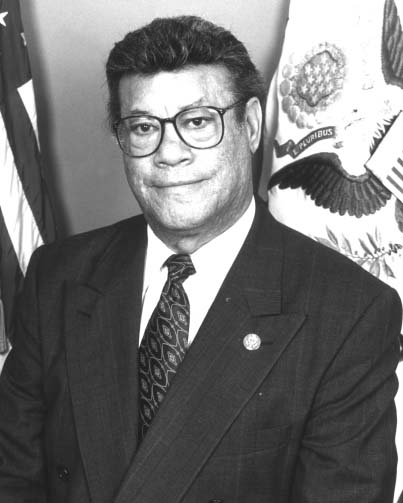Esteban Torres, who passed away on January 25 from natural causes, two days before his 92nd birthday, served eight terms in the House as a congressman and was recognized for guiding an entire legacy of public service in achieving greater Latino representation in politics.
Torres, a Democrat from California, represented the San Gabriel Valley and Whittier area in Congress from 1983 to 1999, joining a congressional body that doubled Latino representation in the country.
Torres chaired “The Congressional Hispanic Caucus” and several Congressional subcommittees, including Finance, Urban Affairs, Banking and Small Business, and helped pass the 1986 “Immigration Reform and Control Act”, which granted citizenship to more than 3 million immigrants.
According to NBC News, “before his political career, Torres served as an activist in his United Auto Workers (UAW) Union branch, later serving as the UAW’s international representative in Washington from 1964 to 1968. He helped found The East Los Angeles Community Union (TELACU), one of the nation’s largest antipoverty agencies. In 1977, he was appointed by President Jimmy Carter to serve as the U.S. ambassador to the United Nations Educational, Scientific and Cultural Organization (UNESCO)”.
According to the official biography on the House of Representatives website:
“Esteban Edward Torres was born in Miami, Arizona, on January 27, 1930, at a mining camp owned by the Phelps–Dodge Company. When Torres was five years old, his father was deported to Mexico, and he never saw him again. Esteban, along with his mother, Rena Gómez, and his younger brother, Hugo, moved to East Los Angeles in 1936, where he attended the public schools and graduated from James A. Garfield High School in 1949. He was brought up by his mother and grandmother, Teresa Baron-Gómez, who instilled in him a sense of cultural pride”.
“From 1949 to 1953, Torres served in the U.S. Army, fought in the Korean War, and was honorably discharged with the rank of sergeant first class. Torres used his benefits from the GI Bill to study at the Los Angeles Art Center in 1953. Over the next decade, he took courses at East Los Angeles College and California State University at Los Angeles. He took graduate-level courses, at the University of Maryland in economics and at American University in Washington, D.C., in international relations. Torres married Arcy Sanchez of Los Angeles on January 22nd, 1955. The couple raised five children: Carmen, Rena, Camille, Selina, and Esteban”.
“In early March 1998, days before the filing deadline for the fall elections, Torres announced that he would retire from the House at the end of the 105th Congress, in January 1999. […] Torres endorsed his chief of staff and son-in-law, Jamie Casso, to succeed him in the Democratic primary, but Casso lost to longtime community leader Grace Napolitano, who garnered the support of the AFL-CIO. She went on to win the general election. In retirement, Torres has pursued his passion for sculpting and painting”.
In a
statement the day after his death, UnidosUS President and CEO Janet Murguía released the following statement about Esteban Torres : “a gifted artist, Torres had a lifelong interest and love for the arts and culture, especially for recognizing the artistic and cultural accomplishments of the Latino community. As a regent of the Smithsonian Institution […] he was an early advocate for a Latino museum, which will soon be part of the mall in Washington, D.C. And even in his retirement, we could count on his support, such as when he served as the first chair of the National Latino Media Council, which helped to bring greater diversity to the major television networks”.
For more biographical details of Esteban Edward Torres,
visit.
 chicano.ucla.edu
chicano.ucla.edu











